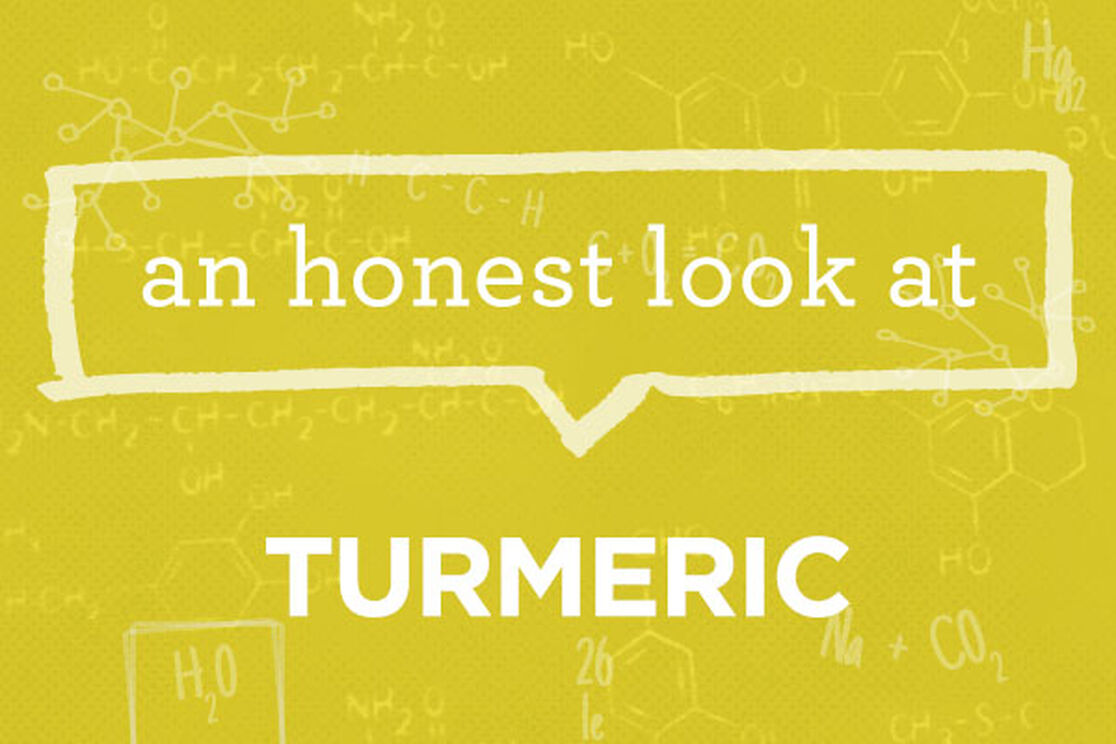This is part of our ongoing series helping consumers better understand chemicals, chemistry, and product formulations. We translate the science, bust the myths, and give you an honest assessment, so you can make informed choices for your family!
Ingredient:
Turmeric (rhizome) Powder
What it is:
Curcuma longa (aka turmeric) is an herbaceous, flowering perennial plant from the ginger family. Part of the plant grows horizontally underground and has offshoots known as rhizomes. The rhizomes are harvested, boiled, dried, and then ground into a deep orange-yellow powder (1).
What it does:
Turmeric has a very, very long history of use, dating back nearly 4,000 years in India, where it was used to spice foods and beverages, for medicinal purposes, as well as for some religious ceremonies (1). Since then, it’s made its way throughout the globe and is used as a spice, a natural dye, an herbal remedy, and in cosmetics. In the past 25 years, as modern science has begun to recognize turmeric’s many potential benefits, over 3,000 publications dealing with turmeric have been released (1).
Why we use it:
We love finding gifts from nature! We use turmeric in our Immunity Plus and Gummy Multi-Vitamin supplements for its natural color and other beneficial properties(2-7).
References:
- Packer, L., Wachtel-Galor, S., Ong, C. N., & Halliwell, B. (Eds.). (2004).Herbal and Traditional Medicine: Biomolecular and Clinical Aspects. CRC Press.
- Chakravarty, A. K., Chatterjee, S. N., Yasmin, H., & Mazumder, T. (2009). Comparison of efficacy of turmeric and commercial curcumin in immunological functions and gene regulation. IJP-International Journal of Pharmacology, 5(6), 333-345.
- Rasyid, A., & Lelo, A. (1999). The effect of curcumin and placebo on human gall-bladder function: an ultrasound study. Alimentary Pharmacology and Therapeutics, 13(2), 245-250.
- Van Dau, N., Ham, N. N., Khac, D. H., Lam, N. T., Son, P. T., Tan, N. T., ... & Lindgren, G. (1998). The effects of a traditional drug, turmeric (Curcuma longa), and placebo on the healing of duodenal ulcer. Phytomedicine, 5(1), 29-34.
- Antony, S., Kuttan, R., & Kuttan, G. (1999). Immunomodulatory activity of curcumin. Immunological investigations, 28(5-6), 291-303.
- Jagetia, G. C., & Aggarwal, B. B. (2007). “Spicing up” of the immune system by curcumin. Journal of clinical immunology, 27(1), 19-35.
- Devasagayam, T. P. A., & Sainis, K. B. (2002). Immune system and antioxidants, especially those derived from Indian medicinal plants. Indian journal of experimental biology, 40(6), 639-655.
We aim to provide you with the most honest and credible information possible. This article was reviewed for accuracy by The Honest Team and was written based on sources that are linked at the bottom of the article.
blog_review_statement



